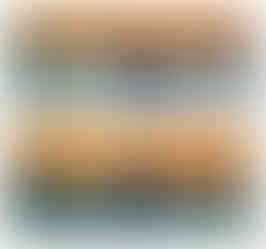Research
- Liz Jenkin

- May 24, 2020
- 3 min read
Meghann Riepenhoff - Cyanotypes
A photographer whose work I have been drawn to is Meghann Riepenhoff. Her work with cyanotypes is incredible - in Littoral Drift she explores the effects of the sea and rain on the prints, burying them in the sand and letting the sea partially wash over them during exposure. The sand creates a beautiful texture on the cyanotype, with some grains being more translucent than others, and gives different results depending on whether it is wet or dry. I love how Riepenhoff has used a range of blue and green tones, and utilised what she found on the beach to make her cyanotypes look like the ocean. You can almost feel the spray and hear the crashing waves.
One thing I am fascinated by is the fact that Riepenhoff doesn't always wash her prints, allowing them to develop and change over time. This leads to the presence of some more interesting colours - greens, greys and oranges. These aspects provide extra layers of texture, drawing the audience in even further. The contrasting oranges in particular evoke a sense of warmth, perhaps reminiscent of the sun shining down on a summer's day at the beach.
I hope to be able to create similar cyanotypes - I have already experimented with some fabric on the beach, but due to lockdown will be limited on where I can go to make them. My aim in doing this is to capture a sense of the beach and transport the audience there, with impressions of the texture of the sand between their toes, and the coolness of the waves washing around them.
Susan Derges - Watergrams
I have also been inspired by Susan Derges' work with water. Like Riepenhoff, Derges captures her images without a camera, although her technique is considerably different. Derges creates watergrams - a type of photogram where the paper is submerged in water, and with a flash of light the pattern of the water above leaves an impression on the paper. She often goes out to a beach or river at night, allowing the natural water to run over the paper and using the moon or a torch as a light source. These prints also have silhouettes of the branches that overhang the river, and give you the impression of resting in the riverbed and looking up at the sky.

Derges uses Cibachrome paper in order to create a direct positive colour image. If I do anything similar to this, I will only be able to create negative images with the resources I have access to in the lockdown. There is something enchanting about the organic nature of these prints. Though all images are created in the river Taw, each is a unique snapshot of a specific moment. This impression of movement and fluidity is what I hope to capture in my work, allowing the audience to experience the water. The images below have particularly inspired me. The first has tones similar to Riepenhoff's cyanotypes and a great level of detail, emulating a busy surface of a pool of water. The second image captures the shoreline; the waves drawing back over the sand creates a lot of texture, transporting you to the beach where you feel the water rush over your feet.
I have never created watergrams before, nor do I have access to a dark room. While I wouldn't be able to leave the house to create watergrams outside like Derges does, I could potentially make some at home with water in the bath or smaller tubs. These wouldn't capture the same patterns as organically moving water in rivers or the sea, but instead some ripples, which still suggest the movement of water. I have heard of a way of making your own developer at home, so I will look into this to see if caffenol-c is a viable method of developing prints.
References
https://makezine.com/2016/01/15/radical-cyanotype-process-meghann-riepenhoff/ - accessed 09/05/2020
https://www.independent.co.uk/arts-entertainment/the-secret-life-of-the-riverbed-1196767.html - accessed 09/05/2020
http://www.artnet.com/artists/susan-derges/ - accessed 09/05/2020















Comments